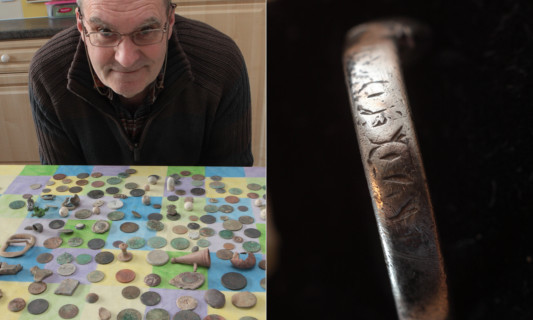A 14th century silver talisman found by a metal detectorist is to be added to the collection of Perth Museum and Art Gallery.
Discovered near to Pitcairngreen by Phil Hannah, the silver fede ring with a bezel that is designed as a pair of clasped hands is of a type used as a betrothal ring, the hands representing the union of marriage.
The find was made only a few months after Mr Hannah, a photographer from Almondbank, had acquired his first detector.
“I had only been out about 10 minutes when I found it,” he said. “I thought that it was a cheap child’s toy ring but I then saw it had a Latin inscription.”
He photographed the ring and sent it off to the treasure trove unit at the National Museum of Scotland.
“I got an email back saying it was an important and significant find,” said Mr Hannah, 61.
The ring has been examined and will now be housed in the collection of the Perth Museum and Art Gallery in George Street.
The treasure trove report notes: “The ring is very worn, but the partial lettering IUDEORU can be seen at the end of the inscription.
“This fragment indicates that the inscription must have been one of the most common inscriptions on medieval Scottish jewellery IHESUS NAZRENUS REX IOUDOREUM or Jesus of Nazareth, King of the Jews, which was commonly believed to protect the wearer from violent death and which can be paralleled on jewellery from hoards which date to circa 1300.”
As the finder, Mr Hannah receives the market value of the ring, which will be split with the farmer. “I have found some other interesting things, including silver coins,” he said. “I go out most days if I can.”
Picture by Phil Hannah
